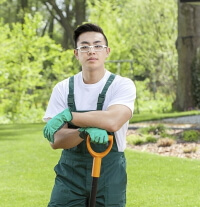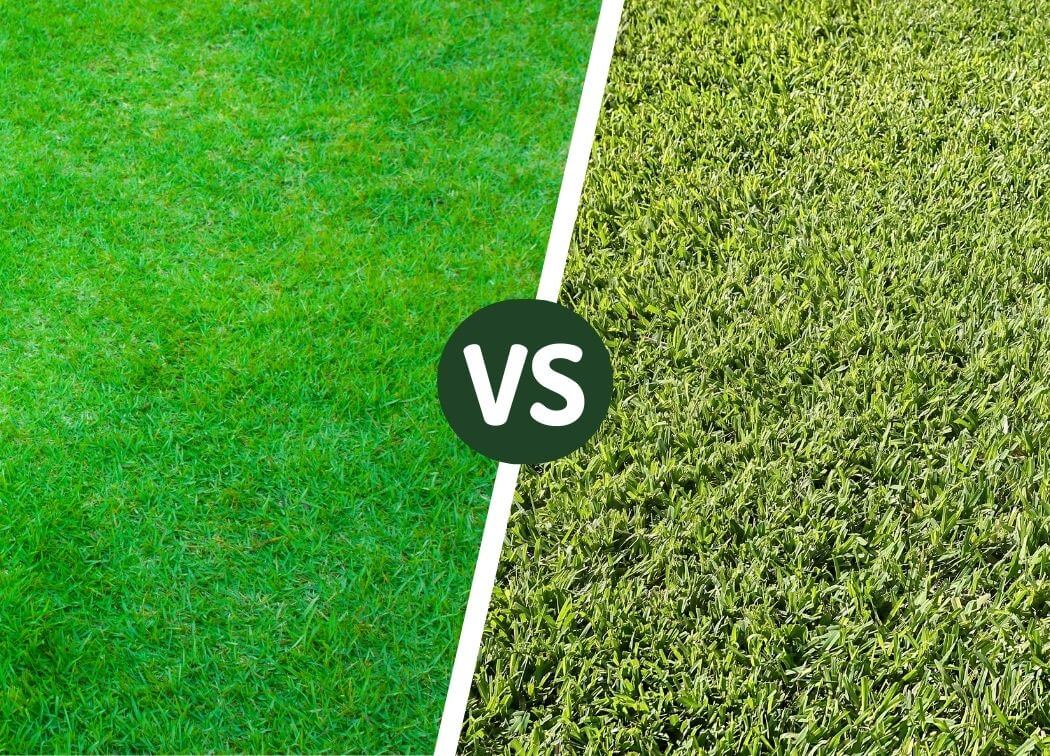Do you want your lawn filled with St. Augustine Grass or Zoysia? Both are warm-season grasses, but you should consider subtle differences when choosing grass.
St. Augustine grass and Zoysia grass are excellent warm-season grasses: they grow fast, are drought-tolerant, and make perfect companions for your Florida property or lawn in the southern United States.
Both dark green grass types have pros and cons worth considering.
The main difference is that Zoysia grass requires more maintenance, grows slower and cost more than St. Augustine grass, but works better in poor soils.
Zoysia grass lawns are grey-green with a fine texture. Meanwhile, an Augustine lawn is blue-green in tint and possesses a more coarse texture.
Here are some identifying features of both grass species and the similarities and differences between Zoysia grass and St Augustine grass.
Zoysia vs. St. Augustine Grass: Differences
When choosing between Zoysa grass and St. Augustine grass, you need to look at what separates them. Their shade tolerance, drought tolerance, texture, and appearance are important.
You will need to look at the maintenance needs. Does it need more or less frequent mowing? Is grass growth fast or small? Is it shade tolerant and salt tolerant to the extent you need it to be?
These will affect how well your lawn survives traffic, moderate shade, and how easy it is to maintain it.
Here’s a quick rundown on the most important distinctions between Zoysia and Augustine. They will help you when choosing a grass that works for your lawn:
Zoysia
- Greyish Green Color
- Fine Turf Texture
- More detailed and frequent maintenance
- More costly to establish and maintain
- Costly Sods
- Spreads through both rhizomes and stolons
- Doesn’t turn green until late spring
St. Augustine
- Blue-Green Color
- Coarse Turf Texture
- Fairly low maintenance
- Relatively Cheaper to Establish
- Cheap Sods
- Spreads through stolons only
- Turns green in early spring
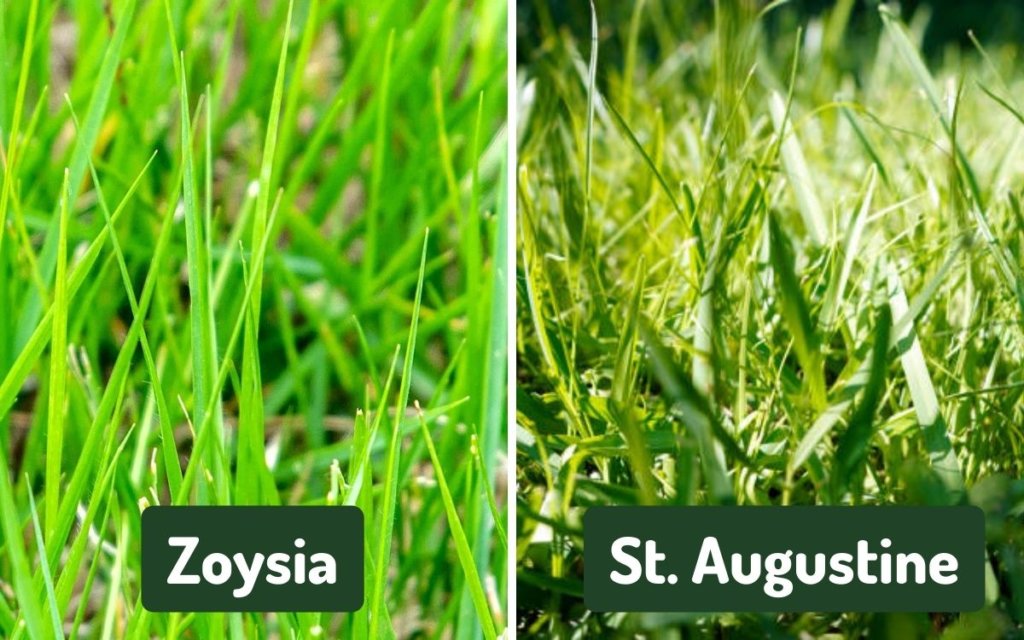
Here are various aspects that can help you determine the best for your existing lawn.
Color of Lawn
A Zoysia grass lawn will have different colors and appearances depending on which Zoysia you use during the growing season. Zoysia cultivars can be emerald-green, dark, or light green.
- Popular Zoysia EMPIRE leaves are Dark Green when healthy.
- Innovation Zoysia leaves grow Dark Green when healthy.
- El Toro Zoysia leaves when healthy is Dark Green.
- Palisades Zoysia leaves are a healthy Light Green.
- Meyer Zoysia leaves when healthy grow Emerald Green.
St. Augustine grasses, meanwhile, assume a blue-green to dark green shade.
- Palmetto St. Augustine leaves have an Emerald Green look when healthy.
- CitraBlue Augustine leaves grow a Deep Blue-Green color.
- Floratam Augustine leaves have a Medium Green look when healthy.
- Raleigh St. Augustine leaves, when healthy, are Medium Green.
Many strains and strands of Augustine and other zoysia cultivars can suit your lawn. Find the one with the color that catches your eye.
Turf Texture
Zoysia makes up fine-bladed turf that is smooth to the touch. Augustine grass, meanwhile, makes for turf with thick grass blades rounded at the end. They have a coarse feel to them.
If you’re looking for a soft carpet feel or getting hardy turf out of your lawn, you can choose Zoysia and Augustine.
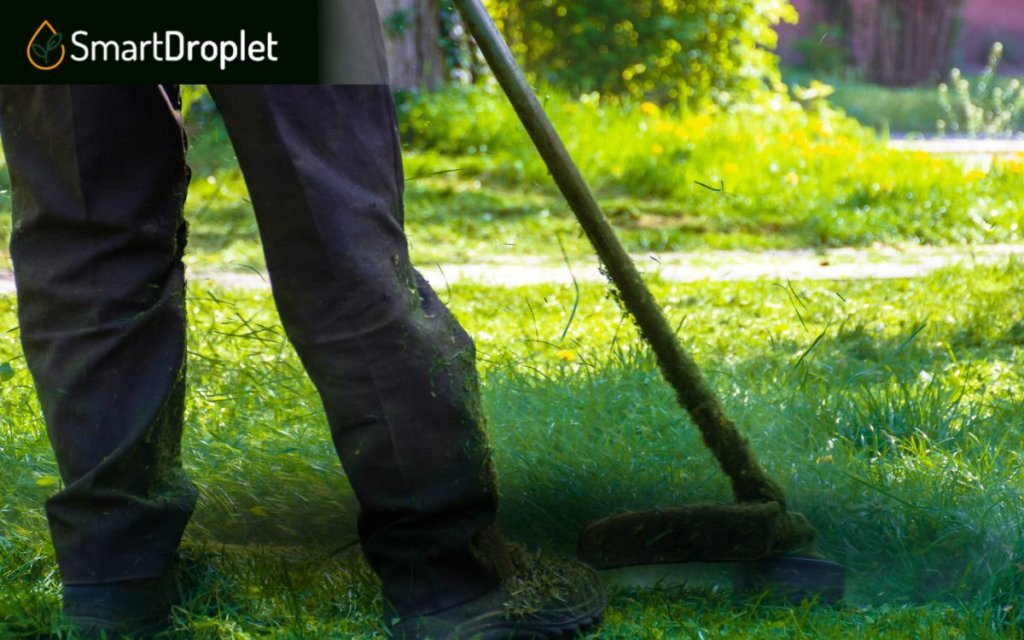
Maintenance Requirements
Both Zoysia and St Augustine grass have growth habits that need dedicated maintenance. However, you still have a choice based on which one is easier to maintain.
Zoysia grass is higher maintenance, requiring more frequent mowing and fertilizing. Although we have to point out that St. Augustine grass also requires a proper fertilizer, so you can’t skip that task with that grass type either.
However, Zoysia edges Augustine out when it comes to soil preferences. Zoysia can handle clay soils that can get compacted. On the other hand, St. Augustine is more affordable and easier to maintain.
It works more for sandy soils and can go up to 2 weeks without mowing.
Shade-Tolerance
As the name implies, warm-season grass relies on hotter soil temperatures to germinate. Keeping Zoysia and St Augustine in shaded areas keeps them from growing properly.
Zoysia doesn’t do well in shaded areas. Augustine is more shade-tolerant.
Cost of Establishment
St. Augustine lawns cost less to establish than Zoysia. Zoysia grass requires a lot more preparation before installing. These include laying a base of Canadian Peat moss and silica sand.
This contrasts with Augustine, which only needs a basic soil mix. Zoysia sods also retail more commercially than St Augustine grass sods. St Augustine wins this round.
Spreading Mechanism
Zoysia grass spreads through above-ground and underground shoots (stolons and rhizomes).
In contrast, St. Augustine grass can only spread through above-ground shoots (stolons) and lacks the capabilities to spread through underground shoots (stolons).
A Zoysia-filled lawn spreads more evenly because it relies on both stolons and rhizomes for spreading. It grows above ground and below ground.
St. Augustine, meanwhile, relies only on rhizomes and shoots above-ground. It lacks underground shoots (stolons). Zoysia spreads out this round.
Growth
St. Augustine grass hits the ground running when the growing season comes around. Like many of its fellow warm-season grass, it turns green in the spring.
Zoysia, meanwhile, is a slow grower. It turns green only in late spring. If you’re looking to get your lawn going as fast as possible, you need to look to St. Augustine.
Identifying Zoysia Lawns
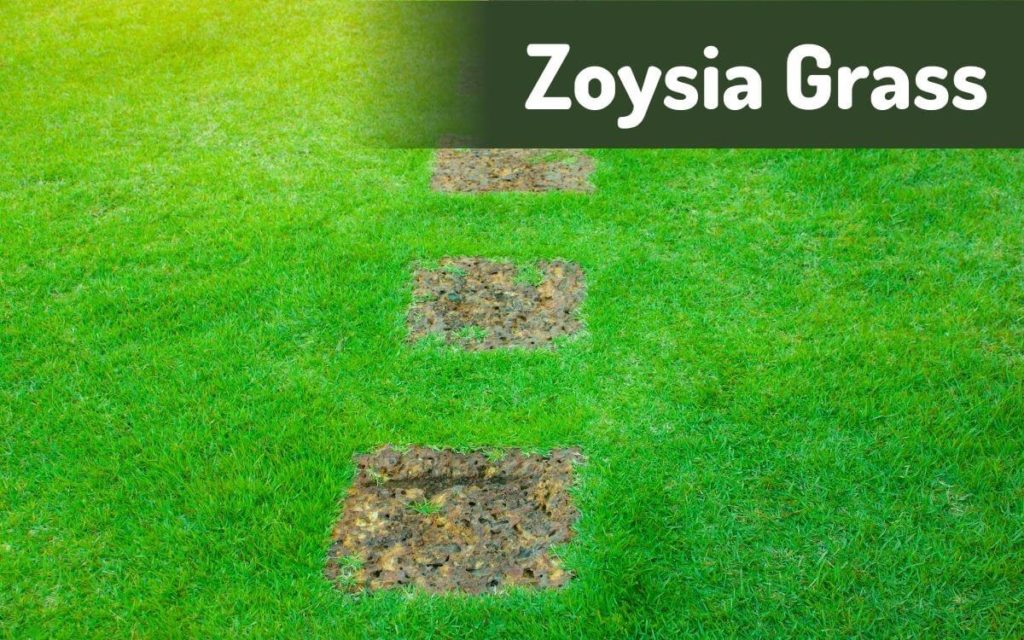
Bermuda grass – but with minor differences. For instance, Zoysia grass has leaf hairs that stand upright on the upper sides of the leaf blades – a characteristic exclusive to Zoysia grass and one that you will not find on Bermuda grass.
Zoysia grass is a turfgrass tolerant of drought comparable to Bermuda grass. However, Zoysia’s distinct for the upright leaf hairs on the upper ends of its leaf blades.
It’s also softer and spongy when compared to Bermuda grass, which is hardy turf.
To compare Zoysia grass varieties like Empire Zoysia with St. Augustine, let’s look at some unique features this grass has:
- Slower growth rate: Zoysia is a warm-season turfgrass that turns into a brown patch in the winter months. It grows slowly, taking its time and growing in late spring, its growing season.
- Zoysia can withstand foot traffic: Zoysia does relatively well against the cold and can handle a good barefoot walk and even regular foot traffic without issues. It also does well when it comes to dethatching and aeration. It’s surprisingly resilient even with poor drainage. This allows you to skip fertilizing when working with this grass.
You can also inspect the texture of leaf blades to distinguish the two main Zoysia varieties: japonica, which is coarse, and matrella, which is fine.
When not tended to, Zoysia develops grey or brown spots and can get infested by the chinch bug.
Identifying a St. Augustine Lawn
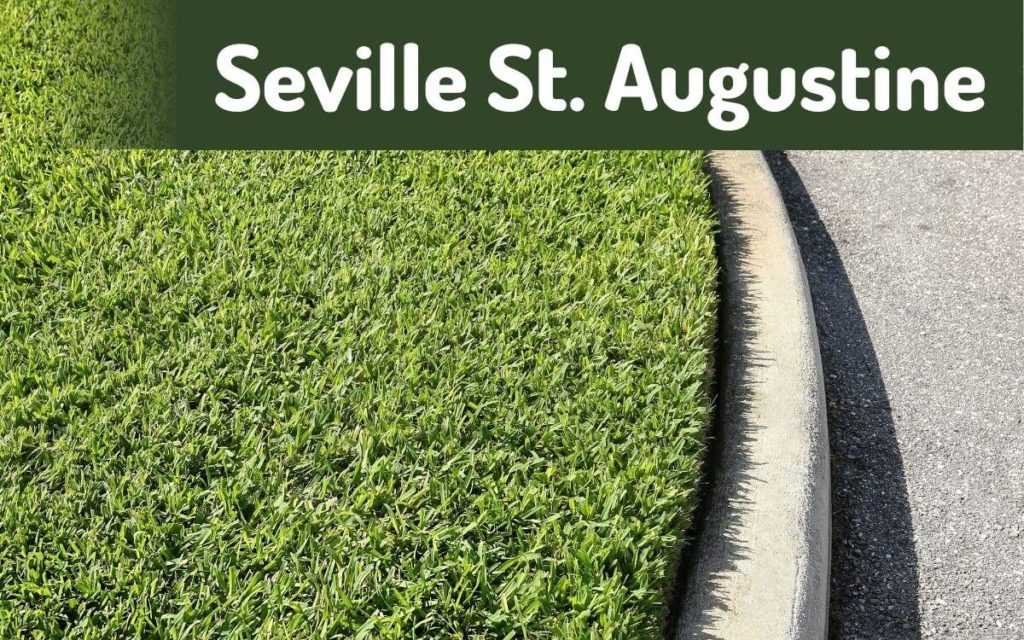
St. Augustine is a coarse turfgrass and does well in the shade. Originally from Africa and the Caribbean, St. Augustine does well in warm, tropical coastal climates where temperatures stay consistent.
Just like Zoysia, St. Augustine is drought-tolerant and can handle foot traffic. St. Augustine turfs grow dense and deep – it has broad leaves with a circular tip, are large, and have flat stems.
It’s distinct for forming as big thatches of grass. You can confirm your lawn by looking for its stolons and above-ground shoots.
Grass Establishment
Before you plant St Augustine, you must account for the limited amount of seeds it produces.
You will need a lawn that drains well and give it consistent irrigation. When your lawn drains well, your grass should grow quickly.
St. Augustine is prone to developing brown patches and grey leaf spot diseases when neglected.
Which Grass to Choose
In many ways, the choice between Zoysia and St. Augustine grass is determined by what you want your lawn to look like.
You will need to evaluate your aesthetic and your ability to care for it.
Is There Shade on Your Lawn?
When it comes to tolerance, it’s wiser to use St. Augustine grass for its tolerant, resilient nature.
On the other hand, Zoysia cultivars make for more beautiful lawns because of Zoysia’s finer texture. When looks are concerned, Zoysia wins.
What Are Your Budget and Maintenance?
Budget is a major concern for every lawn owner. Zoysia produces good turf grass, but it costs more and requires more upkeep.
St. Augustine grass is the logical choice if working with a tighter budget.
Conclusion
In the battle of Zoysia vs. St. Augustine grass, you can choose which grass is better based on its color, texture, maintenance needs, shade tolerance, spread, establishments, and growth habits.
Whatever choice you make, it is vital to choose the grass that works in your climate.
It should be within your maintenance capabilities. Zoysia grass and St Augustine provide a tight carpet and excellent turfgrass.

